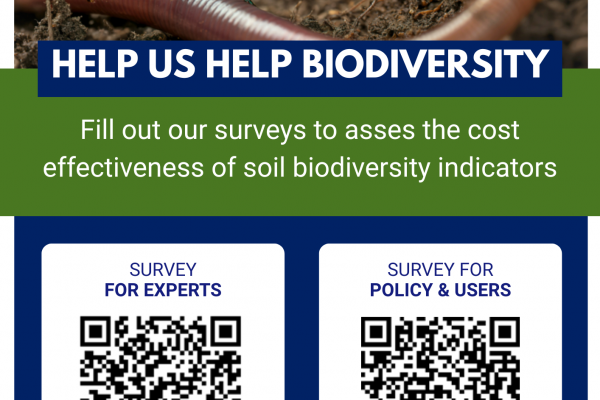SOB4ES needs your expertise: Fill out the cost-effectiveness for soil health indicators survey
How can we measure soil biodiversity? And how much does it cost?
For the monitoring of soil biodiversity health, a range of indicators are available, from nematode count to bacterial community data derived from eDNA. As part of our ongoing efforts, we aim to test the cost-effectiveness of published indicators for soil biodiversity.
To this end, the team from SOB4ES partner Harper Adams University prepared two surveys to gather insights from key stakeholders — including land managers, researchers, policy makers, industry representatives, retailers, and advisors — on the relevance and practicality of various soil biodiversity indicators.
Surveys for experts and end-users
One survey is tailored to scientific experts in the area of soil biodiversity indicators in the EU and UK. This survey aims to identify the technical characteristics of different indicators and how well they are applied to different land uses and ecosystem services. To complete this survey requires some scientific knowledge about different soil biodiversity indicators and should take less than 20 minutes.
The second survey is targeted at EU and UK stakeholders and end-users, i.e. anyone who is likely to implement or use soil biodiversity indicators in monitoring programmes to support decision making. This survey aims to identify the importance of different criteria that relate to the use of indicators in cross-land use/biome/country measuring and monitoring programmes and should take less than 10 minutes to complete.
You can help to evaluate cost-effectiveness of soil biodiversity indicators
Whether you are an expert, a stakeholder or an interested party, please help us by filling out the survey using the links below by December 1st, 2025. Your expertise and perspective are invaluable to this work. Your input will help ensure that the proposed indicators are both scientifically sound and useful in practice across different sectors and advance the overall mission of the SOB4ES project.

